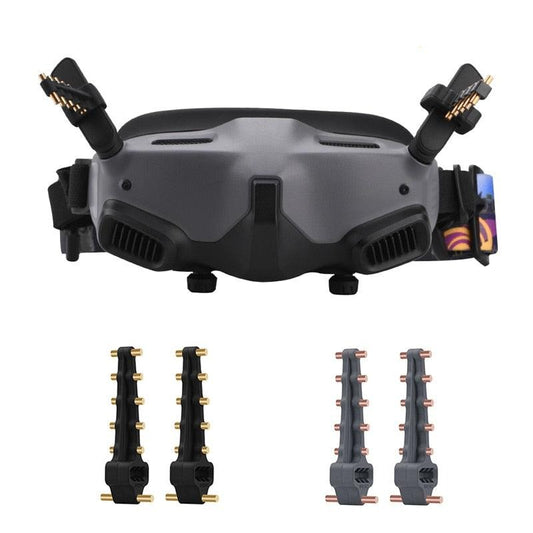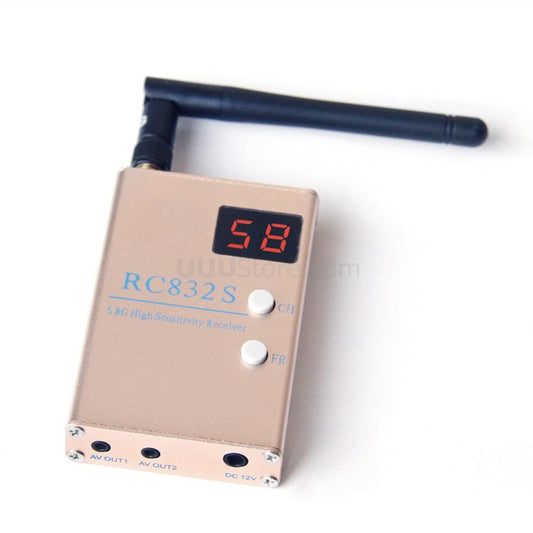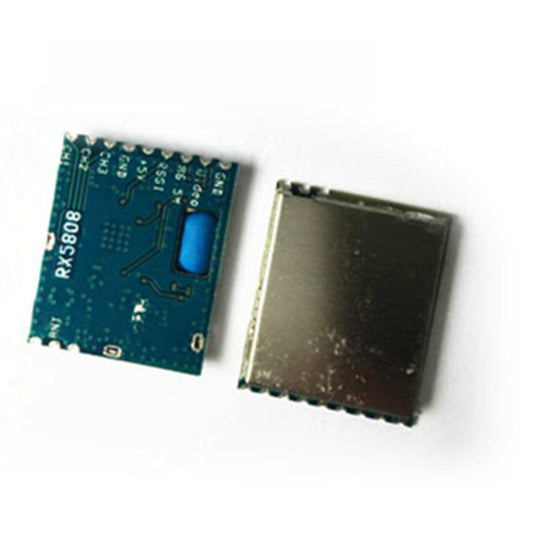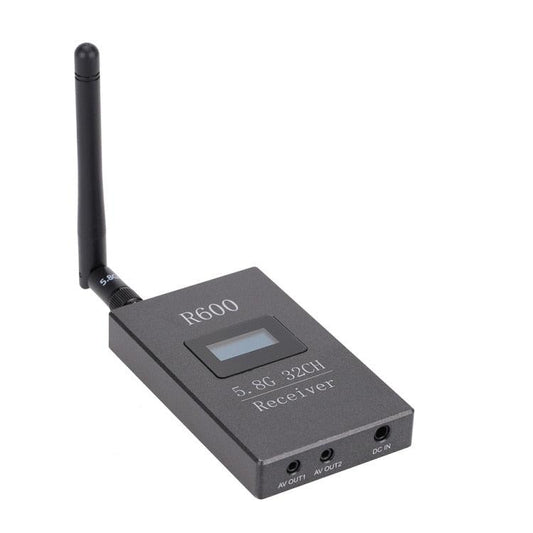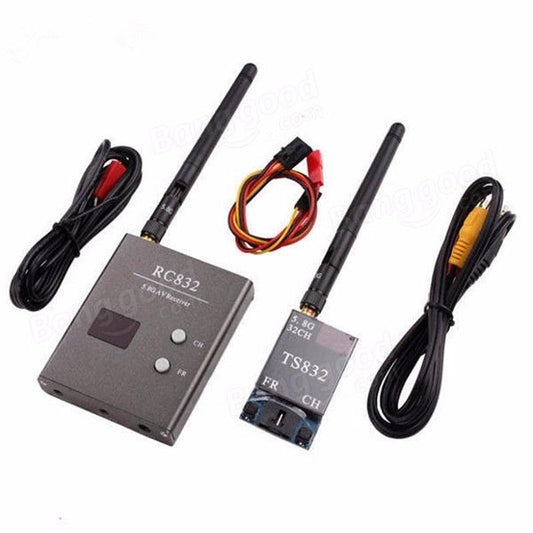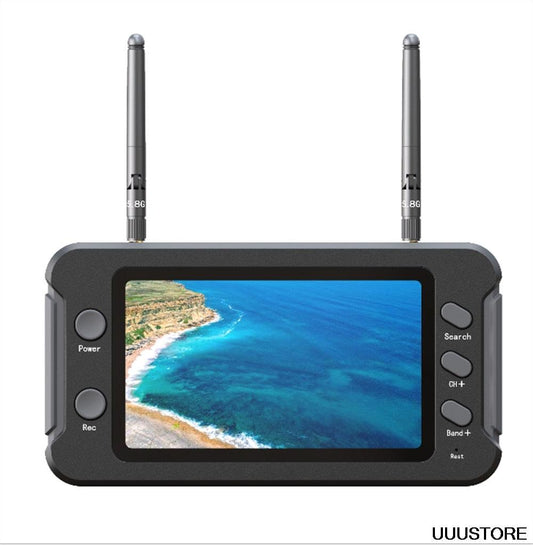-
Yagi Antenna for DJI AVATA Goggles 2 - Remote Controller Extender Signal Booster for DJI Goggles 2 Drone RC Accessories 5.8Ghz
Regular price $13.36 USDRegular priceUnit price per -
Goggles Receiver - 1Set ImmersionRC 5.8G RapidFire Analog PLUS Goggles Dual Receiver Module For FatShark RFIRE01 FPV RC Drone Multicopter Parts
Regular price $298.07 USDRegular priceUnit price per -
AKK FX2 Ultimate Transmitter - Mini 5.8GHz 40CH 25mW/200mW/600mW/1200mW Switchable FPV Transmitter for RC FPV Racing Drone RC Quadcopter
Regular price From $41.20 USDRegular priceUnit price per -
HDZero Freestyle Digital HD Video Transmitter (1W Capable) 5.8G 720p 60fps 200mW FPV Transmitter 30mm*30mm for FPV Goggles Drone
Regular price $146.63 USDRegular priceUnit price per -
TS5828L FPV Transmitter - Micro 5.8G 600mW 40CH Mini FPV FPV Transmitter Module with Digital Display For FPV Quadcopter
Regular price $35.99 USDRegular priceUnit price per -
AKK X2-ultimate Transmitter - 25mW/200mW/600mW/1200mW 5.8GHz 37CH FPV Transmitter with Smart Audiofor RC FPV Racing Drone RC Quadcopter
Regular price From $41.20 USDRegular priceUnit price per -
Skyzone Raceband T600 Transmitter / R600 Receiver - 5.8G 5.8ghz 600mW Transmitter R600 OLED Display 5.8g 32ch Receiver for FPV DIY Racing drone long range
Regular price From $27.70 USDRegular priceUnit price per -
AKK FX2 Ultimate Transmitter - 5.8GHz 40CH 25mW/200mW/600mW/1000mW Switchable FPV Transmitter for RC FPV Racing Drone RC Quadcopter
Regular price $47.72 USDRegular priceUnit price per -
TS832 Drone Receiver - 5.8G 5.8GHZ 600mW Update 48CH Wireless Video Transmitter (TX) Module RP-SMA Airplane ZMR250 QAV280 QAV250 FPV Drone
Regular price From $25.68 USDRegular priceUnit price per -
Boscam TX5813 Transmitter - 5.8G 5.8ghz 10mW 8CH Wireless Mini AV Audio and Video Transmitter Module For FPV Aerial Photography Multicopter Drone
Regular price $21.18 USDRegular priceUnit price per -
Boscam TX5823 Transmitter - 5.8Ghz 200mW 8CH Wireless Audio Video FPV Transmitter Module For racing drone ZMR250 QAV280 QAV250 DIY
Regular price $22.22 USDRegular priceUnit price per -
RC832S Receiver - FPV 5.8G 5.8GHz 48 Channels Video Receiver With A/V and Power Cables Same As RC832 RC832H For FPV Racing Drone
Regular price From $26.75 USDRegular priceUnit price per -
AKK FX3-ultimate Transmitter - 5.8G 40CH 25/200/400/600mW Switchable Smart Audio FPV Transmitter Support OSD for RC Racing FPV Drone Quadcopter
Regular price From $41.20 USDRegular priceUnit price per -
HB5808 Receiver - 5.8GHz 5.8G 40CH Channel Diversity Dual Receiver for Fatshark Goggles w/Raceband high quality for racing drone
Regular price $63.77 USDRegular priceUnit price per -
Boscam RX5800 RX5808 Receiver -5.8G 5.8Ghz 8 Channels Wireless AV Audio Video Receiver for FPV Drone Airplane Helicopter
Regular price From $18.91 USDRegular priceUnit price per -
5.8GHz 1200mW FPV Transmitter and Receiver - with 2500M UAV/UGV Wireless Video Transmitter CCTV Transmission for FPV Drone
Regular price $184.43 USDRegular priceUnit price per -
PandaRC VT5804-BAT VTX - 5.8G 40CH 2500mW 2.5W Adjustable OSD FPV VTX 6-36V 20X20mm 30X30mm for RC FPV Drone Long Range Airplane
Regular price $59.67 USDRegular priceUnit price per -
HGLRC Zeus VTX Transmitter - 5.8G 40CH PIT/25/100/200/400/800mW Smart Mounting 20*20mm/30*30mm FPV Transmitter For FPV RC Drone Quadcopter
Regular price $38.03 USDRegular priceUnit price per -
Boscam TS832 Transmitter - 5.8g 5.8ghz 48ch 600mw Video Transmitter with CCTV Camera Suit For QAV250 F450 Walkera DJI Phantom
Regular price $39.90 USDRegular priceUnit price per -
HDZero Race V2 Transmitter - VTX 5.8G 40CH 25mW 200mW Digital HD Video FPV for FatShark SharkByte FPV Goggles RC FPV Drone
Regular price $105.15 USDRegular priceUnit price per -
Boscam TS351 Transmitter - 5.8G 200mW 2Km Range Video Audio Wireless FPV Transmitter For RC Car MultiCopter Drone
Regular price $24.18 USDRegular priceUnit price per -
TX-5D Transmitter - FPV 5.8G 600mW 32 Channel TX-5D HDMI to AV CVBS Wireless Transmitter for RC MultiCopter DJI Gopro QAV250 Drone Quadcopter
Regular price $61.27 USDRegular priceUnit price per -
Skyzone 5.8G 25mW 48 Channel Transmitter w/ IR Sensitive PAL/NTSC Camera For RC Models Multirotor Quadcopter Antenna Part
Regular price $31.51 USDRegular priceUnit price per -
1000TVL Micro Camera w/ 2.8mm wide angle lens + TS832 5.8Ghz 48Ch 600mW FPV AV Wireless Transmitter for RC QAV250 Quadcopter
Regular price $42.07 USDRegular priceUnit price per -
Tarot-RC TL300N3 - 5.8G FPV receiver suitable for small multi-axis rotor aircraft Transmitter and Rc Racing FPV Drone
Regular price $47.55 USDRegular priceUnit price per -
R600 Video Transmission Receiver - 5.8G 600mW 32CH AV Video High Sensitivity Image Transmission Receiver with OLED Display for FPV Drone Aerial Quad Photography
Regular price $31.17 USDRegular priceUnit price per -
PandaRC VT5804 V3 VTX - Over 20Km Long Range 5.8G 25mW/200mW/400mW/800mW/1000mW Video Transmission for Aerial Photography FPV Drone
Regular price From $56.41 USDRegular priceUnit price per -
iFlight SucceX Force VTX Video Transmitter - 5.8GHz 25mW / 100mW / 400 mW / 600mW VTX Adjustable for FPV Racing drone part DIY Accessory
Regular price $35.42 USDRegular priceUnit price per -
Eachine RC832 Boscam FPV 5.8G 48CH Wireless AV Receiver - Professional Racer RC FPV Racing Drone RC Plane Kit Accessories
Regular price From $22.95 USDRegular priceUnit price per -
SKYZONE SKY02O FPV Goggles - OLED 5.8Ghz SteadyView Diversity RX Built DVR HD AVIN/OUT RC Racing FPV Camera Googles Drone
Regular price $454.92 USDRegular priceUnit price per -
SKYZONE SKY04X V2 FPV Goggles - OLED 5.8GHz 48CH Receiver 1280X960 Display FPV Goggles Support DVR With Head Tracker Fan For RC Racing Drone
Regular price $681.98 USDRegular priceUnit price per -
SKYZONE SKY04L V2 04L 04X FPV Goggles - 1280×960 5.8G 48CH Steadyview Receiver Build In Headtracker Video Glasses RC Racing Drone
Regular price From $469.93 USDRegular priceUnit price per -
HIVR101 FPV Goggles - New 5.8g 854*480HD Fpv Automatic scan diversity monitor goggles Weight 198g for Racing FPV Drone
Regular price $271.19 USDRegular priceUnit price per -
4.3 Inch FPV Monitor - 800x480 IPS HD Display 5.8GHz 40CH Diversity Receiver For RC Drone Radio Controller
Regular price $98.23 USDRegular priceUnit price per -
BETAFPV VR02 FPV Goggles - 4.3 inches 800*480px w/5.8GHz 40ch receiver for FPV racing or Model airplanes FPV Glasses
Regular price $71.73 USDRegular priceUnit price per -
Skyzone 04X 04L Cobra S SteadyView RX 5.8Ghz 48CH FPV Receiver Diversity 5V SMA Support Upgrading For Eachine EV300O Goggles
Regular price $134.10 USDRegular priceUnit price per
